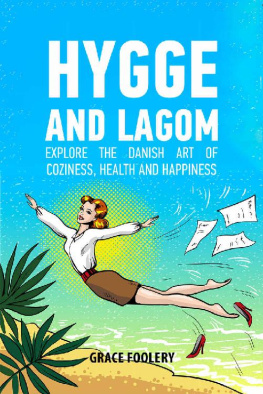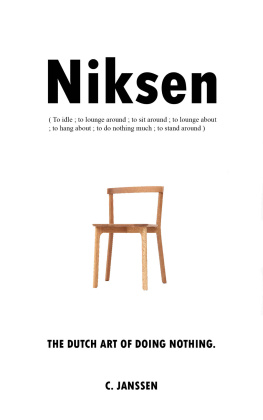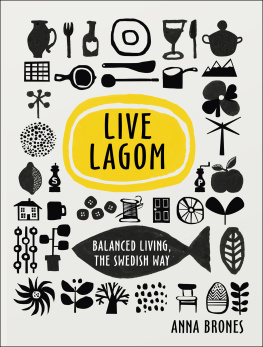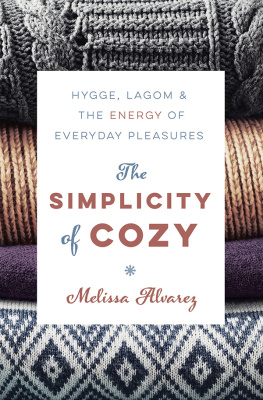Copyright 2017 by Linnea Dunne
Hachette Book Group supports the right to free expression and the value of copyright. The purpose of copyright is to encourage writers and artists to produce the creative works that enrich our culture.
The scanning, uploading, and distribution of this book without permission is a theft of the authors intellectual property. If you would like permission to use material from the book (other than for review purposes), please contact permissions@hbgusa.com. Thank you for your support of the authors rights.
Running Press
Hachette Book Group
1290 Avenue of the Americas, New York, NY 10104
www.runningpress.com
@Running_Press
Originally published by Octopus in September 2017 in the United Kingdom
First U.S. Edition: October 2017
Published by Running Press, an imprint of Perseus Books, LLC, a subsidiary of Hachette Book Group, Inc.
The Hachette Speakers Bureau provides a wide range of authors for speaking events. To find out more, go to www.hachettespeakersbureau.com or call (866) 376-6591.
The publisher is not responsible for websites (or their content) that are not owned by the publisher.
Commissioning Editor: Leanne Bryan
Editor: Pollyanna Poulter
Copy Editor: Jo Richardson
Art Director: Yasia Williams
Illustrator: Naomi Wilkinson
Senior Production Manager: Katherine Hockley
Picture Research Manager: Giulia Hetherington
Library of Congress Control Number: 2017942833
ISBNs: 978-0-7624-6375-6 (hardcover) 978-0-7624-6376-3 (ebook)
E3-20171031-JV-PC
What is lagom, why should you care and if you do, how can you adopt it? From the Vikings to Zlatan and an unlikely lagom advocate, we bust some myths and prepare to lagomify our lives.
WHAT IS LAGOM?
on Vikings, balance, and semi-skimmed milk
In 1996, Sweden got itself a new nickname. Author Jonas Gardell called it the country of semi-skimmed milk, a moniker the Swedes took to heart and have been using ever since. In his standup show, the author described a country that celebrates balance and puts fairness on a pedestal, where consensus is king and everyone mucks in. He depicted a nation that loves white walls and functional design, and that deems semi-skimmed milk just perfectnot too skinny, not too fat. He characterized a country that is lagom.
Lagom has no equivalent in the English language, but it loosely means not too little, not too much, but just enough. Its widely believed that the word comes from the Viking term laget omliterally around the teamand derives from the custom of passing a horn of mead around and ensuring there was just enough for everyone to get a sip. But while the anecdote may hit the nail on the head, the true etymology of the word points to an old form of the word lag, a common sense type of law.
The law of lagom
So whats the law of lagom? At its simplest, the word describes something thats just enough or just rightlike the right amount of milk in your coffee or the perfect pressure of a massage. Beyond the material world it becomes far more sophisticated, implying that the balancing act has reached perfection, and relying on a range of social codes. Lagom is accepting an invitation to spend the weekend at a friends house, but bringing your own bed sheets because its fair to share the burden of laundry. Its having the right to stay at home with a sick childpay intactbut never abusing that right.
Lagom is buying a practical careven if its not the most visually pleasing of vehicles. Its painting just one feature wall in your lounge and leaving the rest white, because doing the entire room would be too much. Its wearing bright-red lipstick, but leaving the rest of your makeup perfectly understated. Lagom is having a burger but opting out of the fries, because moderation is a virtue; its whipping up a brand-new dinner dish using nothing except leftovers, because waste is a mortal sin.
Putting the law into practice
Postcard Sweden presents spacious rooms of minimalist dcor sleek enough to promote a sense of calm in just one look. Lagom is a great deal about that spaceabout decluttering and simplifying, erasing prejudice and paving the way for honesty. In the bigger picture, the balance of lagom goes way beyond emotional wellbeing and interior design to become all about belonging and shared responsibilitynot just fitting in, but being part of a greater entity. Its about relationships with your neighbors, looking after communal spaces and paying taxes that fund study groups (see ) and heavily subsidized culture schools (institutions for music and cultural tuition).
Recently described by the World Economic Forum as beating other countries at just about everything, Sweden has developed an enviable welfare state with generous parental packages and exceptionally low levels of corruption. In that regard, this country of semi-skimmed milk is the product of a skillful balancing actprotecting its people yet setting them free, together.
MY RELATIONSHIP TO LAGOM
on the Law of Jante, busting some myths and a lagom approach to happiness
I was born and raised in Sweden, but left for Dublin aged 19, keen on adventure and to boost my worldliness. The contrast was dramatic, and I fell head over heels for Irelands culture of spontaneous fun and never really caring about whats just enough. With fellow Swedish ex-pats, I raved about a newfound freedom and the relief of not having to take things so seriously, only moments later to bemoan the failings of sorely lacking rental market regulation in Ireland and the madness of leaving heaps of garbage out in the street for collection.
You could say that I ran away from a life of lagom, or you could blame the Law of Jante. Penned by DanishNorwegian author Aksel Sandemose in 1933 in an attempt to describe a certain attitude among fellow Scandinavians, the Law of Jante sets out ten rules that dictate the dos and donts of acceptable behavior. Together, they depict a society that frowns upon individual success and achievement, a culture obsessed with rules. When lagom is occasionally criticized for being restrictive, it is linked to thisbut is the criticism fair, and do the old rules even apply to 21st-century Sweden?
A lagom kind of happiness
Ill admit that I was a little taken aback when I first heard about the idea of lagom as the new covetable approach to life, the Swedish secret to happiness. Admirable though its principles of balance are, were they in reality making Swedes exceptionally happy?
Now I can see the irony of the fact that I didnt immediately get it. Swedes may not be the happiest folk in the world, but theyre consistently in the top ten of various happiness rankings. This is a lagom kind of happinessnot the elated or euphoric and definitely not the boastful kind, but measured. And its exactly this quality of balance that would seem to be the secret to true, sustainable happiness. Just consult the psychology books (














